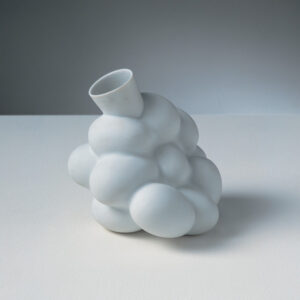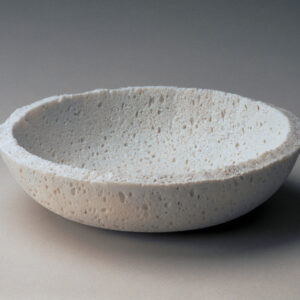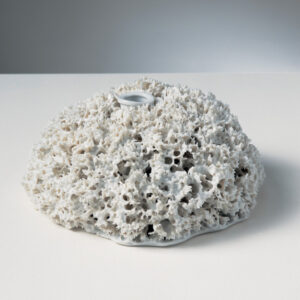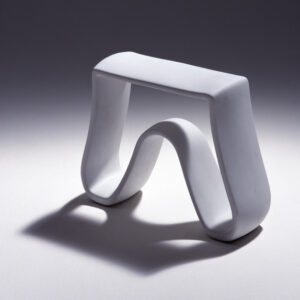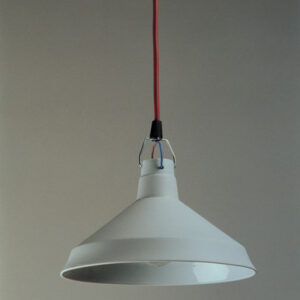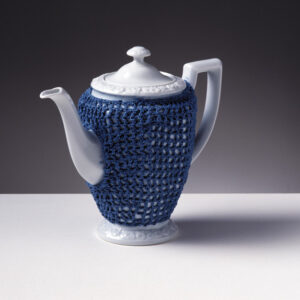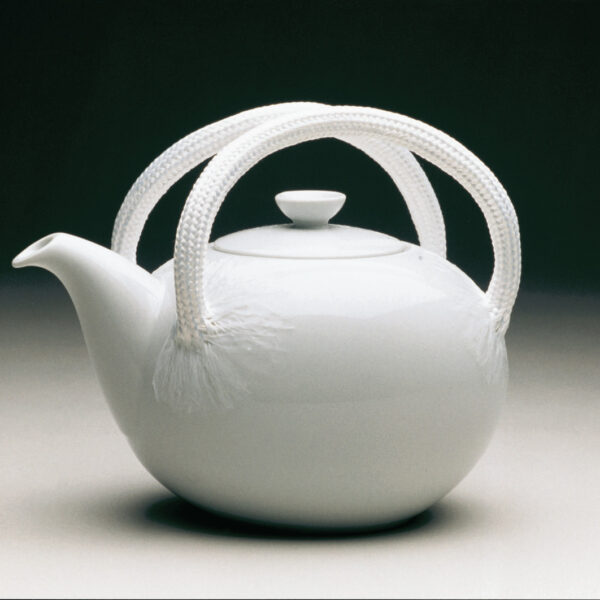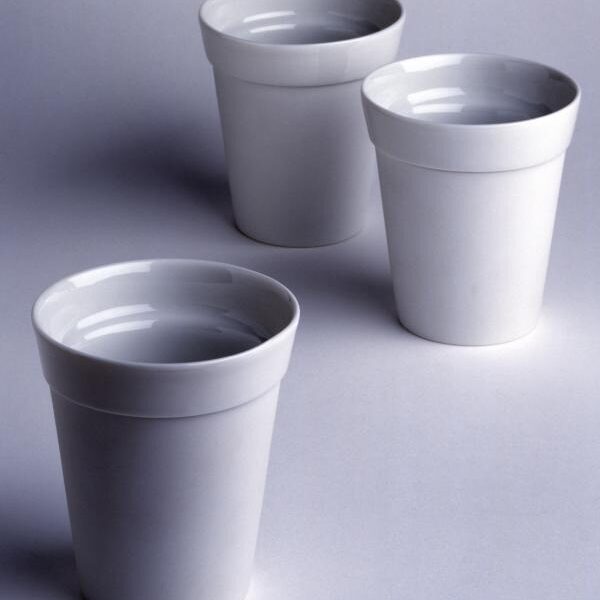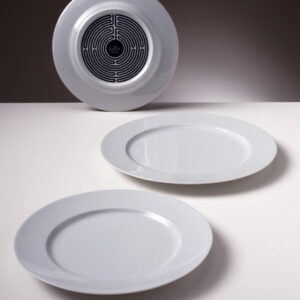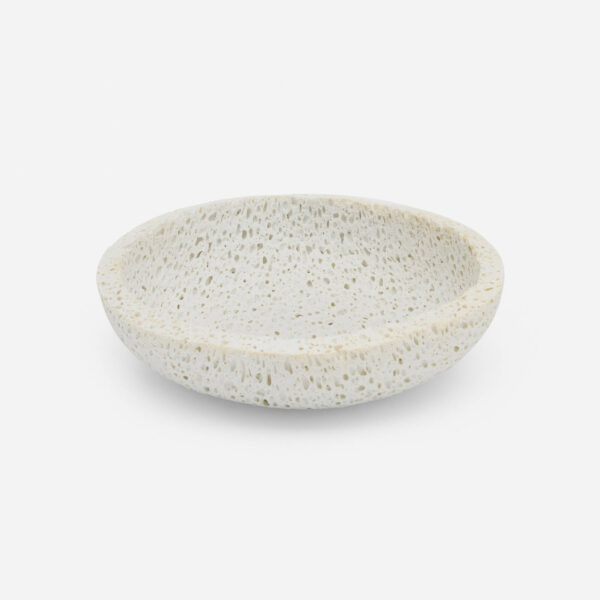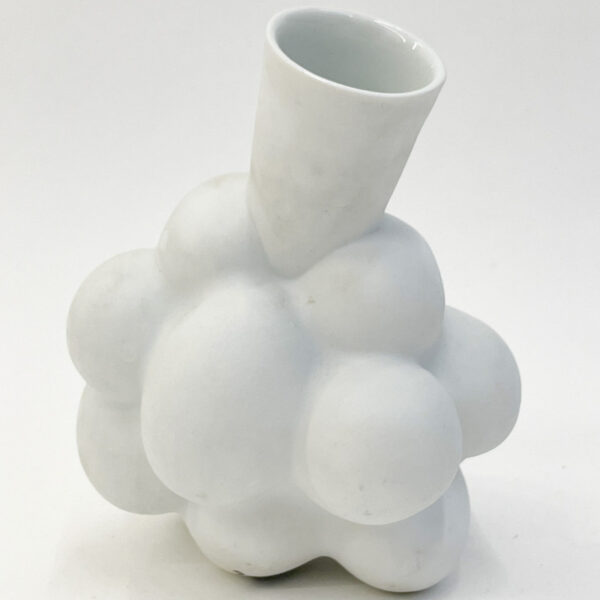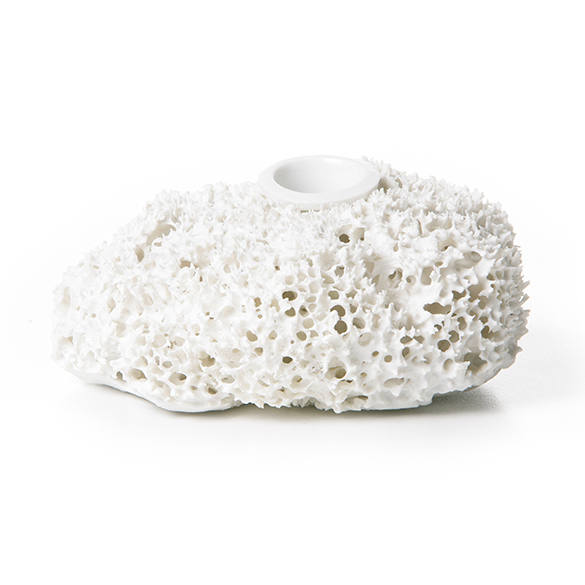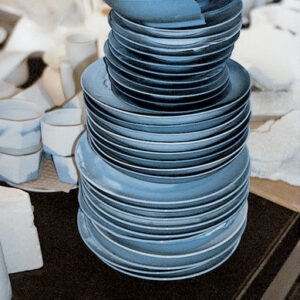Droog Design For Rosenthal “Experiments in Porcelain”
Droog Design for Rosenthal, 1997
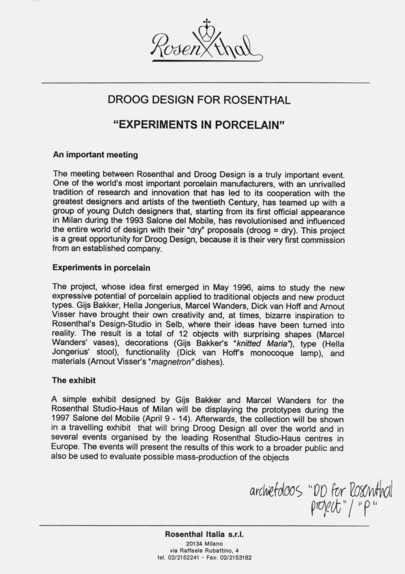
The German porcelain factory Rosenthal approached Droog to take part in an experimental project to be presented in Milan. This was the first time Droog had been commissioned to design products. The project aimed to challenge porcelain’s elegant and smooth image. In it, a selection of designers develops various ideas around product use, texture, colour and production itself.
Fashion designer Karl Lagerfeld wanted to buy those pieces but it was not possible: ‘I’m a big fan’, he admits in the New York Times. ‘Droog Design is the spirit of modernity. It is non-design and unpretentious. Can you imagine, that Rosenthal didn’t produce any of it? I wanted everything and all I could get was the porcelain lamp’. (Simply Droog, 2004).
In April 1997, the project results were presented in the Rosenthal showroom at Corso Mattiotti during the Salone del Mobile in Milan. In the following August, the products were shown at the ‘Tendence’ trade fair in Frankfurt. Many now belong to the Droog Collection.
Eggshell Vase by Marcel Wanders
To create the bulb-shaped vase, Wanders stuffed a latex condom with hard-boiled eggs and then cast the resulting shape in white porcelain. He imbued the traditional medium with humour and an organic sensibility not normally associated with it.
A part of the Victoria and Albert Museum collection.
Foam Bowl by Marcel Wanders
Marcel Wanders developed a technique to produce porcelain objects without the use of plaster molds. A natural sponge is taken and dipped under fluid porcelain clay, the clay impregnates the sponge and after drying the porcelain-impregnated dry sponge is burned in a regular ceramic oven. The sponge totally disappears and the porcelain perfectly copies the delicate texture of the sponge.
A part of the Museum of Fine Arts, Houston, and Victoria and Albert Museum collections.
Sponge Vase by Marcel Wanders
Inspired by the natural form of a sponge, Marcel Wanders developed a unique method for creating porcelain using moulds. Firstly, a sponge is dipped into liquid porcelain clay. Once dried, the porcelain-coated sponge is fired in a standard ceramic kiln. The sponge burns away during firing, leaving behind a precise, intricate replica of its delicate texture. This innovative technique allowed Wanders to create a series of forms that are both mass-producible and unique.
The Sponge Vase is a part of the Victoria and Albert Museum’ and the Museum of Fine Arts, Houston, collections.
Porcelain Stool by Hella Jongerius
Experiments with the unfired and fired porcelain: flexible in the initial phase, as if it was a textile ribbon, strong once the stool is fired. The experiments are part of a project initiated by Droog Design. ‘Porcelain is by nature malleable, soft and warm. I wanted a stool to express the true nature of the material’ — Hella Jongerius.
A part of the Centraal Museum Utrecht permanent collection.
Porcelain Lamp by Dick van Hoff
Porcelain is most commonly connected to tableware and in the context of lighting, it is usually referred to the technical aspects. Here it takes on a new role. The cord is a design element: it is red, attached to a conventional long white cord and is meant to be suspended from a hook on the ceiling.
‘This lamp was born out of a dissatisfaction with the existing techniques. In this design, the porcelain fitting literally melts into the shade, which is also made of porcelain’, — Dick van Hoff.
The Porcelain Lamp is a part of the Centraal Museum Utrecht permanent collection.
Dick van Hoff distances himself from the usual method of sticking prints by artists onto ready-made objects. He made a series of plates in which no two are the same by mixing two colours of clay in the extrusion machine and letting the machine dictate the change of colour.
Extrusion Plates by Dick van Hoff
Dick van Hoff distances himself from the usual method of sticking prints onto ready-made objects. He made a series of plates in which no two are the same by mixing two colours of clay in the extrusion machine and letting the machine dictate the change of colour.
Knitted Maria by Gijs Bakker
A teapot whose handle was made by impregnating strong fibres with ceramics and then using them into the simple form of the pot itself. The effect was to create a moment of decoration at the point where the fibres spread out to grasp the smooth curve of the teapot’s body, recalling the elaborations of flowers and tree forms of both Rococo and Art Nouveau versions of the same object.
The Knitted Maria is a part of the Centraal Museum Utrecht collection.
High-Tech Accent Teapot by Gijs Bakker
The development of new, more elastic and heat-resistant fibres makes it possible to give a new face to traditional products. The handle of this teapot for the German porcelain manufacturer Rosenthal exists of ceramic fibres melted with the glaze of the teapot.
The High-Tech Accent Teapot is a part of the Centraal Museum Utrecht collection.
Cool Cups by Arnout Visser
Designed as a double-walled coffee pot and double-walled beakers, Cool Cups had an inner shape glazed and the outer was not. Those two shapes were fused under the heat of 1,200 degrees.
Microwave Plates by Arnout Visser
A classic labyrinth pattern of iron oxide glaze has been added to the bottom of existing plates from the Rosenthal collection. It is this decoration that makes it possible to heat a pile of plates in the microwave: The bottom of the plates stays warm for some time while the edges stay cool.
Microwave Plateas are part of the Centraal Museum Utrecht collection.

